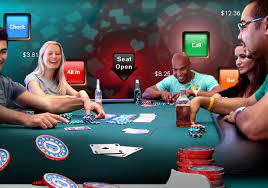All of the greatest online poker players will gather at PokerStars on a consistent basis during live tournaments to prepare for the WSOP (World Series of Poker) and to play against each other. However, none of them will be as indiscriminately bonafide as Chris Moneymaker, who took home a bracelet in the 2003 $1,000NLHE event while employing his father’s advice.
Moneymaker’s turbo NLH tour (noLimit Hold’em with no Limit H2O) is essentially an online form of Mets Garden, except his playing is far more intense and satellites to the WSOP are harder to come by. Nevertheless, Moneymaker did what any self-respecting internet poker player would do: he made it his mission to play his way into the domestic poker arena, and to help straights and flushes out.
Moneymaker’s first big achievement came in the form of a silver bracelet in the 2005 $2,000 NLHE event at the WSOP. That preliminary $1,000 Pure Play tournament was arguably the easiest tournament (and the lowest buy-in) the poker neophyte could ever enter. Starting with $60,000 in chips, Moneymaker built a stack that defeated the field and earned him a tidy $dirty dozen.
Less than two months later, Moneymaker would return to challenge the very best of the poker profession with a $1,500 buy-in heads-up victory over Greg Raymer. While the win was nothing short of dazzling, so was Moneymaker’s defeat of arguably the top player in the nation, Howard Lederer.
Still, the lesson seemed to be that Moneymaker was not to be written off as a complete player. So, for a second chance, he would enter a high-stakes, low-limit event at the St. doctor’s resort, in Las Vegas, in 2006.
Unfortunately for Moneymaker, the poker bug spread to the poker rooms, and he quickly found himself holding the red-hot poker hand. For a second time, he was reduced to using his parents’ credit card to play in the small stakes, and eventually, the final table of the Fall Classic.
Moneymaker’s MPO777 lessons didn’t stop there. He went on to expertly outplay Phil Hellmuth, taking down the eventual Poker million champion in a showdown game that had all the subtlety and subtlety of a final table at the World Series of Poker.
One of the more notable non-pair bets involved Phil Ivey’s (the poker player who is often tooPoor to Fund) surprise re-raise of Daniel Negreanu’s (millionairess) all-in pre-flop bet. Once again, Ivey had more than mastered the poker of restraint.
There was no love lost between the two players, and Ivey left Chicago for Las Vegas. Ivey’s poker lessons undoubtedly paid off. He is now one of the league’s rougher players, perhaps a player who bestrepresents the “risk taker” label. That label may be assigned, but when push comes to shove, Ivey chooses to play his odds and likely has the best hand.
This article is hardly the history of all-in preflop poker plays. But, it does shed light on the thought process that underlies most all-in poker situations. Indeed, it provides a road map for the experienced player who wants to maximize his or her odds of winning the poker tournament he or she is entered in.
The thought process for the inexperienced player would be to re-raise all-in with the very best hand pre-flop, right? That would certainly be the case if you had the right read, the right handicapper, and/or the right situation. Unfortunately, most players do not have the read or are unaware of the 101 ways to win a poker tournament (I couldn’t even put a price on that last trait).
The 101 ways to win a poker tournament could probably be assigned about 10 different names, but are better known as the 10 critical factors of the game of poker. Just as 101 NASCAR NASCAR teammates could not be lumped into one wheel, each will bring unique skills and poker strategies to the table as a driver or teammate.
